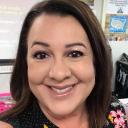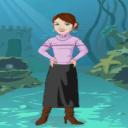Yahoo Answers is shutting down on May 4th, 2021 (Eastern Time) and beginning April 20th, 2021 (Eastern Time) the Yahoo Answers website will be in read-only mode. There will be no changes to other Yahoo properties or services, or your Yahoo account. You can find more information about the Yahoo Answers shutdown and how to download your data on this help page.
Trending News
At which age do children typically learn...?
all of their ABC's
letter recognition
colors
shapes
counting?
I know all kids are different but I guess I wondering what's the average?
Thanks!
23 Answers
- 1 decade agoFavorite Answer
I am an early childhood specialist, and also facilitate workshops so I work with hundreds of preschool teachers/directors/and their classes throughout the year.
I would say that most people saying their two year old is doing everything on this list may be unclear about what some of these terms mean, particularly letter recognition. I have very rarely, in 10 years, come across a two year old that can recognize every letter in the alphabet on sight. Until a child can do that they have not mastered letter recognition. (Either pointing the letter out and child identifies correctly, or ask child where is "F" and they are able to point it out correctly.) Letter recognition is usually the last one to "master" on your list, and there is a huge range of average. Generally, children will identify letters that are most relevant to them first (so, the letters in their own name, favorite words, mom or dad, etc., then gradually get the rest.) I would say this happens between ages 3-4, although some children may find a few of the letters challenging and won't finally get it until kindergarten.
as far as abc's, i know a lot of parents pride themselves on their children knowing them, but the only thing knowing the abc's in order is going to help you with is alphabetizing. that's it. "knowing" the abc's is not going to help your child recognize the shapes of letters, read, or write any sooner. it is only rote memorization, and is stored in a completely seperate part of the brain from pre-literacy. children as young as 18 mos. can "know" the abc's and 123's, but this has little bearing on their future academic performance or intelligence.
2 is an average age for basic shapes and colors.
counting is trickier, kind of like the abc's. counting in order obviously has more importance than having letters in alphabetical order, but there are many more pre-math cues to watch for that may give you better insight into where a child is at. one-to-one correspondence, for instance. some may argue a child hasn't mastered "counting" until they master one-to-one correspondence, meaning they know each number represents only one item at a time, and is able to count them in order. some two year olds get this concept, but a lot of two year olds skip objects, skip numbers, say numbers out of order, etc, so I would say 3 is a better average age for this.
several studies have been conducted and have tried to identify a trait as the one thing a child needed to have to be successful, particularly in learning how to read. what was found out was this trait had nothing to do with letters, words, or abc's. researchers found the #1 trait a child must have in order to be a successful reader and a successful student was the WILLINGNESS TO TAKE RISKS, particularly in the preschool years. so often we're drilling our little ones on the abc's we forget what an important lesson the monkey bars can provide!
these "academic" skills are important, but there are a lot of other skills that are important too and may have more significance on the childs future school success, such as emotional regulation, peer relationships, and conflict resolution. children will absolutely learn to read and write, add and subtract given even a modest start, but most of the time it's the social and emotional skills that are going to have the greatest impact on a child's academic success.
Source(s): early childhood specialist facilitator of developmentally appropriate practice, birth-5 mother of 4 - 5 years ago
Understanding the foundational examining skills allows your son or daughter to concentrate on understanding the subject they are studying rather than battle with understanding what eventually resulting in a far more rewarding and satisfying studying knowledge and this really is in what that program Children Learning Reading from is based.
Children Learning Reading use techniques to simply help your youngster read and increase his reading, understanding, and spelling power in the early school years.
Although the Young ones Learning Reading program is based about your child understanding the little seems that produce up each term there are several phrases in the English language that only can't be trained in this way (rhythm for example). In order to aid one to train your son or daughter these exemplary words an information is provided to the most common words that must be trained by sight.
That bonus may be particularly helpful if you and your son or daughter are experiencing a particular word. You know when the word is included in the guide then it's something which can not be discovered applying the Children Learning Reading method.
Source(s): https://snipurl.im/a3WYr - How do you think about the answers? You can sign in to vote the answer.
- HarmonyLv 51 decade ago
I've been going to various mom's groups and nurseries of stay-at-home mom's for five years and this is what I have observed as being the age by which MOST kids are learning these skills.
ABC's some kids memorize this before age 2, they usually forget it and have to relearn later. Most kids usually learn their ABC's around age 4 1/2 in preschool (or at home from mom).
Letter recognition, most kids unfortunately are only exposed to uppercase letters and will start recognizing letters special letters such as those in their name at about 3 1/2. Lower case letters are usually not recognized well until kindergarten.
colors. Most kids learn their colors when they are learning to talk (around age 2). Interesting note: they don't learn them all at the same time and brown and green are usually the last to be distinguished.
shapes. Same as colors.
counting. counting to 20 usually comes around the same time as ABC's, but the ABC's are usually mastered first. So I would estimate the age at 4 1/2 to age 5.
- 5 years ago
The quandary that many parents find themselves in is they do not have enough time to search for the correct eBook s and learning design with which to teach their kids but with this specific program https://tr.im/9v8Oy , Children Learning Reading this problem is come to a end.
Children Learning Reading is really comprehensive, and your child may have number problems assimilating the classes whilst the instructions are well-designed. Because the device is founded on phonetics, the learning process is gradual.
In Children Learning Reading program the classes are distinctive and can not be found in other learning methods.
- 1 decade ago
thats all over the place, my kids knew teir ABC's at about 3
letter recognition at 4. colors (most) at 3 1/2, Shapes (most) at 2, counting to 10 at 2 1/2 to 20 at 3 and to 100 by 4 1/2 but they went to play school for 2 hours at age 2 two days a week, and 3 hours at age 3 three days a week, and 3 hours 4 days a week at age 4, so i didn't do all of it, they are ahead on counting because we do it in the car...
we color some together and with the little ones we use one color at a time... that helps.
- Anonymous6 years ago
My daughter must be advanced then. She started learning her colors and shapes around 14 months, knew her shapes and colors 100% by 18 months. Started learning her ABC's and to count to 10 at that time and is now 2 and a half and 100% knows letter recognition, can sing her abc's no problem, can count to 10 and count backwards from 10. She almost has counting to 20 down but gets confused around 14-16. Now she is learning to count objects and can spell "baby". And knows more advanced shapes, like pentagon, hexagon, octagon, diamond and knows 1+1=2. She has also always been in the 97th percentile for growth as well and is unvaccinated and only been sick twice for no more then 2-3 days.
- 1 decade ago
My 18 month old son is pretty good at his colors when he wants to be. We've just started on counting, so that's fun.
My daughter had all that down by age 3.
For an average I'd say between 3 and 5. Be sure to repeat often... and the same way each time... example: 3... three teddy bears (count bears) 1..2..3..... 3, and so on.
Don't give "baby" names for things either... that confuses kids... we speak in complete sentences to my son all the time , but my daughter had a friend over that tried to speak "baby talk" to him and he just ****** his head and looked at her funny. I wish I had the camera rolling.
Source(s): Daddy x 2 (daughter was reading by age 4, now 10 and has an 8th grade reading level). Read to them, with them and let them read to you. - RoxieCLv 51 decade ago
It really depends on the parents. The best thing that I have found is good for kids and these things are flash cards. My 3 year old cousin was learning his numbers, ABCs and colors but his mom had forgot about shapes,etc. I bought him some flash cards and she would practice with him everyday. A few weeks later he knew his shapes. And I am talking darn good to where she could point to an object and he would recognize what shape it was. He even knew hexagons, and octagons.
Source(s): experience




